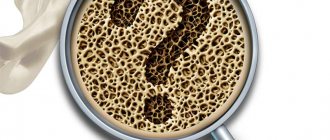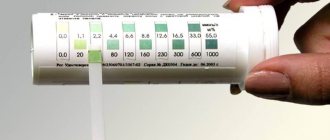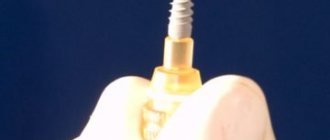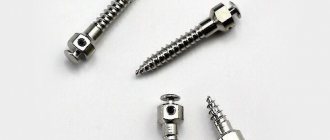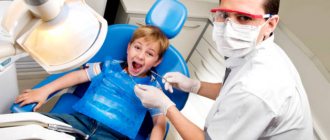Osteoplasty is an operation to replace bone tissue. It is very widely used in all areas of medicine, including dentistry. Osteoplasty involves a general set of measures to increase the volume of bone tissue.
Types of osteoplasty according to the materials used:
- autogenous materials: the donor is the patient himself
- allogeneic materials: donor – another person
- alloplastic materials: synthetic or artificial materials that are analogous to natural human bone tissue
- xenogeneic materials: the donor is an animal
In dentistry, two types of materials are mainly used: the patient’s own bone, as well as synthetic materials that do not cause allergies or rejection.
Dental restoration forever!
Installation of a two-stage implant ROOTT (Switzerland) - RUB 27,000. 32,000 rub.
Osteoplasty in dentistry:
- autotransplantation – transplantation of the patient’s own bone, used to increase the width of bone tissue
- sinus lift - an operation to increase bone tissue in length by raising the bottom of the maxillary sinus, performed on the upper jaw
- increasing the volume of bone tissue using synthetic materials (directed bone tissue regeneration)
- use of barrier membranes
Autotransplantation – transplantation of bone blocks
Autotransplantation is carried out in two stages:
- a place is selected from where a small piece of bone will be taken (as a rule, this is the chin area or the pelvic bone)
- At the transplant site, the gum is peeled off, a block of bone tissue is screwed in with a metal screw that is biocompatible with the body, bone tissue crumbs are sprinkled around, a barrier membrane is applied, and the gum is sutured
This type of osteoplasty is considered the most optimal, since your own bone tissue takes root faster and never causes rejection. Of course, as after any operation, the patient will have to experience certain inconveniences.
Sinus lift – increasing the length of the bone tissue of the upper jaw
Sinus lifting is an operation that boils down to raising the bottom of the maxillary sinus, filling the vacated space with natural or synthetic bone tissue, as well as the subsequent implantation of implants. There are two types of sinus lift:
- open sinus lift: first, bone tissue is built up, and after a certain time (from 3 months) implants are implanted
- closed sinus lift: bone tissue is built up simultaneously with implantation
Increasing bone volume using synthetic materials
Synthetic materials are artificial bone tissue. They do not cause allergies or rejection, completely replacing the patient’s bone. They are a powder that is used for any type of bone tissue augmentation surgery.
Features of natural bone material
Transplants created from organic materials have their advantages and disadvantages. Depending on the type of osteoplastic substance, its abilities will differ. Each graft has two main properties:
- promotes the regeneration of the patient’s own alveolar tissue;
- is a supporting structure for bone cells and foundations for their restoration.
Natural materials of human origin are maximally capable of increasing regeneration. This effect is especially enhanced if, during the process of bone grafting, the patient is given, in addition to the graft, concentrated blood, previously taken from a vein and subjected to centrifugation. Synthetic structures are more aimed at providing support for the atrophied alveolar ridge.
Patients are often wary of getting transplants from animals or other people because of the risk of developing diseases or the perceived high likelihood of rejection. In fact, the process of creating osteoplastic material in dentistry undergoes a number of control checks before it is allowed into dental clinics. None of the grafts pose any threat to the patient, so the risk of infection can be eliminated. However, less successful engraftment is indeed typical for such structures, so the doctor must take into account the individual characteristics of a person’s health. For example, elderly people rarely receive autogenous grafts, since it is dangerous for them to perform the additional step of tissue collection.
Expert opinion
Igor Yurievich Malinovsky
Maxillofacial surgeon, implantologist
Experience: more than 11 years
Osteoplastic surgery often precedes dental implantation. Especially in cases where the tooth was removed more than a year ago. Without load, the bone sags, atrophies, and its volume becomes insufficient to install an implant. This is why it is so important to restore teeth immediately after their removal. If there are a large number of missing teeth, the only way to do without osteoplasty may be basal implantation with deeper installation of implants into hard layers of bone tissue.
General overview
Bio Oss is made from bovine bone material. The drug is available in several dosage forms:
- Bio-Oss Spongiosa. Granules in bottles are suitable for various types of surgical interventions.
- Bio-Oss Pen. Granules in a syringe are used when the working area is located in a hard-to-reach place.
- Bio-Oss Block. Blocks are used to fill in significant anomalies.
- Bio-Oss Collagen. A combined preparation consisting of 90% granules and only 10% pork collagen. Demonstrates high adhesive, regenerative and manipulation properties.
The company produces Geistlich Bio-Gide as an auxiliary material. The composition allows you to create a barrier between the sinus and the bone, accelerates tissue regeneration. The drug is recommended for use in all types of bone grafting: in maxillofacial surgery, implantology, periodontology and surgical dentistry.
The drug exceeds autogenous bone grafts in terms of healing and regenerative capabilities.
Advantages of the drug:
- Possibility of individual use or combination with autogenous bone.
- Stabilizing the blood clot and preventing bleeding in the socket.
- The presence of many hydro- and macropores ensures hydrophilicity.
- Stability and preservation of the volume of the formed bone.
- The variability of forms allows the material to be used in various clinical cases.
The technique of using the drug is determined by the clinical situation and dosage form. General Features:
- Soaking the composition with saline solution or blood.
- Delivery of medicine to the work area and distribution according to pathology.
- Closing the surgical wound with a mucosal flap, suturing, applying a Bio-Gide membrane.
Barrier membranes
Barrier membranes are used in two cases: to preserve the volume of bone tissue after tooth extraction, as well as to fix transplanted bone blocks or synthetic materials. The membrane is installed simultaneously with the operation - it separates the bone tissue area from the mucous membrane, which is why it is called “barrier”. The use of barrier membranes is necessary in cases of bone tissue grafting in order to prevent the mucous membrane from growing into the yet unformed bone tissue. In most cases, they do not require removal, dissolving on their own after a certain time, since they are made from the patient’s own blood plasma or from biocompatible materials.
Other jobs
Alternative to natural material
Modern medicine is constantly creating synthetic structures for various applications. In dentistry, synthetic grafts are being actively modernized, which are much cheaper in cost, but are not inferior in performance to natural materials. It is recommended to use the most modern and proven types of synthetic grafts, because they take root best.
Some dentists completely abandon natural bone material for bone grafting and purchase artificial grafts. Most often they have a granular form, which allows you to quickly adjust the amount of bone restoration. The absence of an organic component in the material reduces immune incompatibility and minimizes rejection processes. Often, it is the use of synthetic grafts that allows immediate implantation and firmly fixation of artificial roots for future crowns.
Examples of work “Before” and “After”
Restoration of chewing teeth of the lower jaw
Case: destruction of the chewing group of teeth of the lower jaw on the right under a bridge.
Basal implantology with instant loading
Case: The patient complained of an uncomfortable removable denture.
Restoration of all teeth on the upper and lower jaw - basal implantation
Case: partial absence of teeth on the upper and lower jaws, complicated by a severe form of periodontitis (tooth mobility).
Simultaneous implantation in the lateral sections of the upper and lower jaw
Case: tooth decay under crowns in the lateral sections of the upper and lower jaws.
Characteristics of Bio Oss
The composition of animal bones is 25% collagen, 65% calcium phosphate, 10% water. Lipids, proteins and polysaccharides are present in small quantities. There are ions of calcium and other elements.
During the manufacturing process of a medicine, organic elements are removed from raw materials. Only the mineral base, penetrated by a capillary network, is left.
The chemical composition, structure and morphology of Bio Oss are almost identical to human bone. This determines the body’s positive reaction to the introduction of the composition. The material integrates perfectly with the native bone.
The bone substitute is distinguished by a pronounced rough surface that promotes active adhesion, proliferation of osteoblasts and accelerated matrix synthesis.
The internal surface of Bio-Oss reaches 80 m2/g. Due to this, intensive ingrowth of blood vessels into the implantation material and accelerated integration are observed.
Safety
Biomaterial made from cattle bones may contain prions - infectious agents that can provoke dangerous diseases: Creutzfeldt-Jakob syndrome, kuru and other types of infection.
The safety of Bio-Oss is ensured by high-quality raw materials and strict adherence to processing technologies. Raw materials undergo multi-stage cleaning and sterilization. The material is exposed to temperature for 15 hours and undergoes chemical cleaning.
When choosing raw materials, manufacturers take into account the country of origin. The effectiveness of veterinary control and precautionary measures aimed at combating the spread of “mad cow disease” are taken into account.
Geistlich Pharma purchases bone raw materials in the USA, where strict veterinary controls are in place. To date, no cases of spongiform encephalopathy have been recorded.
For added safety, raw materials are collected only from three USDA-monitored slaughterhouses.
Biological properties
There are three groups of osteoplastic materials:
- osteoinductive - affect bone formation and growth;
- osteoconductive - act as a frame on which new bone tissue is formed;
- osteoneutral - bone filler.
Bio Oss is part of the group of oteoconductive materials. The osteoconductive properties of the biomaterial are due to the large internal surface area, increased protein absorption and integrin activity.
The microstructure of the composition is distinguished by its extensive internal space. Thanks to this, Bio Oss is an ideal scaffold for newly formed bone tissue.
Result of application
Numerous histological studies revealed that already 5 days after surgery, osteoblasts created mature collagen fibers on Bio-Oss. After six weeks, the formation of an extensive matrix network was observed.
Due to slow resorption, the biomaterial forms a reliable framework for regenerating tissue. It has been proven that implant material made from a combination of native bone and substitute demonstrates high stability.
The adhesion strength of Bio Oss implants in the sinuses after sinus lift three months after surgery is 45% higher than that of implants made from autogenous bone tissue.
Benefits of demineralized lyophilized bone with proven osteoinductive activity
Among all the materials on the market, one can highlight a product called AlloGro from the largest tissue bank in the United States. This preparation is a demineralized lyophilized bone implant whose osteoinductive activity is determined by testing. The need for this test lies in the fact that the inductive properties of donor tissue are highly pronounced, and conducting a biotest eliminates about 10% of donors for the production of material for implantation. Today, in order to save money, to test for osteoinductive activity, laboratories use cell cultures of the SAOS-2 (osteogenic human sarcoma) type, into which thymidine and donor CMP are placed. As a result, the activity of cell division and the rate of thymidine excretion are determined. These data allow the osteoinductive efficiency to be calculated.
As a result of these clinical studies, the company was able to label the product as “Proven Osteogenic Activity.” One of the risks with allogeneic transplants is transmission of a viral infection such as hepatitis or AIDS. But to date, there have been no recorded cases of infection with any virus, even those infections whose development zone is the dura mater. Today, DLK is the most economical and effective osteogenic material.
Instead of an epilogue. What are the best biomaterials?
Geistlich Biomaterials, definitely)))). Because RegenerationDay.
Not only patients, but also osteoregenerators would like to hear the answer to this question, and perhaps not at all from me, but from Vladimir Vladimirovich Putin, a more authoritative person. For in all medical forums, in all professional communities, in all discussion forums, there are endless debates about what is better and why.
In my opinion, to answer this question, it needs to be, at a minimum, reformulated. Something like this:
Why does bone deficiency occur?
There are many reasons that lead to bone thinning and reduction in size. Let's analyze each of them:
- tooth extraction (regardless of the reasons for extraction) ensures that physical activity on the area where the root was previously stops. As a result, the tissue atrophies and gradually dissolves;
- congenital jaw defect or occlusion pathology;
- injury;
- age-related changes in old age;
- inflammatory process in the oral cavity affecting the jaw.

